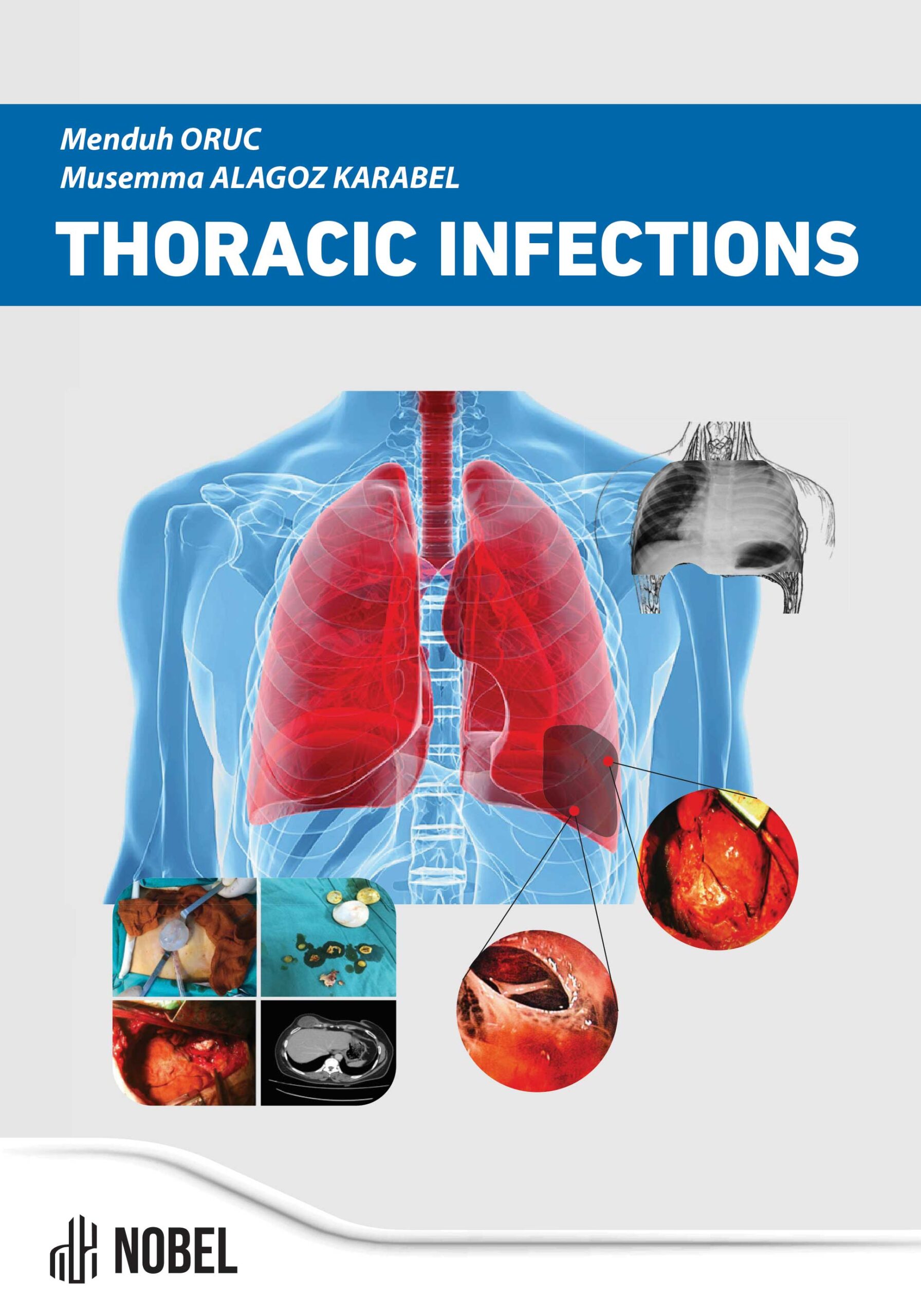Approach to Pericarditis
Can Yucelsen (Author)
Release Date: 2024-03-25
Pericarditis is the inflammation of the parietal and visceral layers of the pericardium, presenting with characteristic chest pain, electrocardiographic changes, and a pericardial friction rub. It is the most frequent form of pericardial disease and a common cause of chest pain, particularly affecting males between 20-50 years. The etiology includes viral, bacterial, fungal, and parasitic [...]
Media Type
PDF
Buy from
Price may vary by retailers
| Work Type | Book Chapter |
|---|---|
| Published in | Thoracic Infections |
| First Page | 127 |
| Last Page | 138 |
| DOI | https://doi.org/10.69860/nobel.9786053358930.11 |
| ISBN | 978-605-335-893-0 (PDF) |
| Language | ENG |
| Page Count | 12 |
| Copyright Holder | Nobel Tıp Kitabevleri |
| License | https://nobelpub.com/publish-with-us/copyright-and-licensing |
The pathophysiology involves the activation of the inflammatory cascade leading to pericardial effusion, which can range from serous to hemorrhagic in nature. Acute pericarditis is characterized by intense inflammation and effusion, while chronic pericarditis may lead to fibrosis and constrictive pericarditis.
Diagnosis relies on clinical evaluation, typical chest pain, EKG changes, and detection of pericardial effusion via echocardiography. Laboratory tests help rule out other conditions, and imaging techniques like CT and MRI can confirm the diagnosis.
Treatment is generally symptomatic for viral/idiopathic cases, utilizing NSAIDs, colchicine, and sometimes corticosteroids. Purulent pericarditis requires surgical drainage and antibiotics, while tuberculous pericarditis needs specific anti-tuberculosis treatment. Pericardiocentesis is indicated for tamponade, and pericardiectomy for constriction.
The prognosis is typically benign for idiopathic and viral pericarditis, although recurrent episodes can affect the quality of life. Acute pericarditis usually resolves without long-term damage, but complications such as cardiac tamponade and constrictive pericarditis can occur.
Can Yucelsen (Author)
Dr., Bagcilar Training and Research Hospital
https://orcid.org/0000-0001-7754-184X
3Graduated from the prestigious Cerrahpaşa Medical Faculty, Dr. Can Yücelsen completed his military service as a medical lieutenant at the Turkish Air Force Academy for one year. Following this, he served as the chief physician at Yalova Armutlu State Hospital for three years. He completed his Internal Medicine residency at Bağcılar Training and Research Hospital.
Agir A, Ural D. Clinical Cardiology. Vol 1. 1st ed. (Komsuoglu B, Ural E, eds.). Nobel Tıp Kitabevleri; 2004.
Who Is at Risk for Pericarditis? - NHLBI, NIH. Accessed May 21, 2024. https://web.archive.org/ web/20161002014435/https://www.nhlbi.nih.gov/health/health-topics/topics/peri/atrisk
Pericarditis | Aurora Health Care. Accessed May 21, 2024. https://www.aurorahealthcare.org/ services/heart-vascular/conditions/pericarditis
Otero RM, Chandra A. Pericarditis. In: Peacock IV WF, Tiffany BR, eds. Cardiac Emergencies. Vol 1. 1st ed. McGraw Hill; 2009:415-425.
Swanton RH. Pericardial Diseases. In: Swanton RH, ed. Pocket Consultant Cardiology. Vol 1. 1st ed. Blackwell Science Ltd; 2006:298-305
Hanna E. Pericardial Diseases. In: Hanna E, ed. Cardiology: Handbook for Clinicians. Vol 1. 1st ed. Scrub Hill Press; 2009:184-193.
Adair OV. Pericardial Diseases. In: Adair OV, ed. Cardiology Secrets. Vol 1. 2nd ed. Hanley & Belfus; 2002:139-142.
Vanan MA, Moscucci Ma. Acute Pericarditis and Pericardial Effusion. In: Eagle KA, Baliga RR, eds. Practical Cardiology. Vol 1. 1st ed. Springer; 2007:409-418.
Braunwald E. Harrison’s Advances in Cardiology. Vol 1. McGraw Hill; 2015.
Gacar MN, Komsuoglu B, Utkan T. Heart and Vascular Diseases Pharmacology. Vol 1. 1st ed. Nobel Tıp Kitabevleri; 2005.
Agcal C, Tanriverdi H. Cardiology Applications. Vol 1. 1st ed. Nobel Tıp Kitabevleri; 2003.
| onix_3.0::thoth | Thoth ONIX 3.0 |
|---|---|
| onix_3.0::project_muse | Project MUSE ONIX 3.0 |
| onix_3.0::oapen | OAPEN ONIX 3.0 |
| onix_3.0::jstor | JSTOR ONIX 3.0 |
| onix_3.0::google_books | Google Books ONIX 3.0 |
| onix_3.0::overdrive | OverDrive ONIX 3.0 |
| onix_2.1::ebsco_host | EBSCO Host ONIX 2.1 |
| csv::thoth | Thoth CSV |
| json::thoth | Thoth JSON |
| kbart::oclc | OCLC KBART |
| bibtex::thoth | Thoth BibTeX |
| doideposit::crossref | CrossRef DOI deposit |
| onix_2.1::proquest_ebrary | ProQuest Ebrary ONIX 2.1 |
| marc21record::thoth | Thoth MARC 21 Record |
| marc21markup::thoth | Thoth MARC 21 Markup |
| marc21xml::thoth | Thoth MARC 21 XML |

